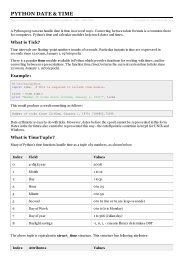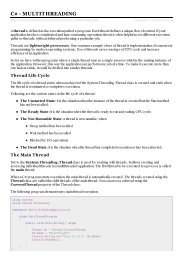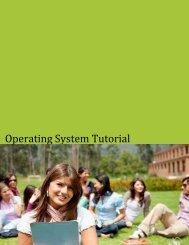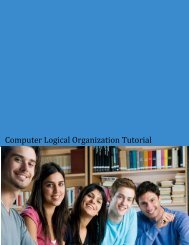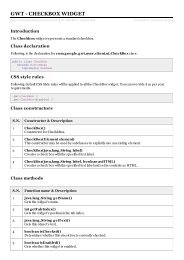Tutorials Point, Simply Easy Learning
Tutorials Point, Simply Easy Learning
Tutorials Point, Simply Easy Learning
You also want an ePaper? Increase the reach of your titles
YUMPU automatically turns print PDFs into web optimized ePapers that Google loves.
22 | P a g e<br />
<strong>Tutorials</strong> <strong>Point</strong>, <strong>Simply</strong> <strong>Easy</strong> <strong>Learning</strong><br />
� The two inherited classes have all the properties as the Order class. In addition they<br />
have additional functions like dispatch () and receive ().<br />
So the following class diagram has been drawn considering all the points mentioned above:<br />
UML Object Diagram<br />
Object diagrams are derived from class diagrams so object diagrams are dependent upon class<br />
diagrams.<br />
Object diagrams represent an instance of a class diagram. The basic concepts are similar for<br />
class diagrams and object diagrams. Object diagrams also represent the static view of a system<br />
but this static view is a snapshot of the system at a particular moment.<br />
Object diagrams are used to render a set of objects and their relationships as an instance.<br />
Purpose:<br />
The purpose of a diagram should be understood clearly to implement it practically. The purposes<br />
of object diagrams are similar to class diagrams.<br />
The difference is that a class diagram represents an abstract model consists of classes and their<br />
relationships. But an object diagram represents an instance at a particular moment which is<br />
concrete in nature.<br />
It means the object diagram is more close to the actual system behaviour. The purpose is to<br />
capture the static view of a system at a particular moment.<br />
So the purpose of the object diagram can be summarized as:<br />
� Forward and reverse engineering.<br />
� Object relationships of a system







